The common types of materials used for constructing a kayak include polyethylene, composite which includes fiberglass, carbon fiber or Aramid fiber, and wood as well as inflatable materials like PVC, Hypalon, or Nitrylon.
More particularly, materials that are employed in the construction of kayaks affect aspects such as their performance, sturdiness, weight, cost, and appearance.
So, if you’re in the market for a new kayak, the first question you should be asking is:
What Are Kayaks Made Of, and how does one decide if the material desired for making the kayak exists or not?
This article breaks the science of the various types of materials used in manufacturing kayaks, and the strengths and weaknesses of each option are also highlighted. We’ll cover:
- Traditional and modern materials used for building the kayaks, evolved throughout centuries, starting from the first Inuit wooden kayak.
- Wood: there are so many materials used to build the kayak today such as wooden types, polyethylene, fiberglass, carbon fiber, Aramid fiber, and inflatable material.
- A comparison of the advantages and disadvantages of using each material is possible keeping in mind aspects like toughness, mass, efficacy, and cost.
- Some guidelines on how to make the right choice of material for your construction need, personal choice and ability to finance.
This article aims to give you an insight into the many types of material currently out there and equip you with knowledge that will help you make the best decision on the material of your next kayak.
The Different Types Of Kayak Materials Used In Kayak Construction: What Are Kayaks Made Of?
Your kayak is thousands of years old What wonderful wilderness would you like to investigate next? What I am trying to say is that it’s not the sit-inside ocean kayak you may buy this winter for the first time, I am concentrating on the product concept!
You know, people living in the region known today as Canada, Greenland, and other parts of the world, called Inuit, were the masters of the kind of boats you are thinking of more than 2000 years ago. These early boats were built with skins of sealed stretched-over wooden or bones of whales with which these people harpooned fish, hunted, and moved about in.
Modern-day sea kayaks have been modified from traditional Inuit kayaks, which have been molded and altered to suit current clients’ demands with the use of better materials and different fabricating procedures.
Fortunately, today’s kayak fabrications and building materials are a lot more varied or complex than their ancient counterparts such as sealskin and whalebone!
It does make sense though, because each material type has its strengths and weaknesses – let me illustrate this.
Rotomolded Kayaks
When it comes to what material is used to make kayaks, well, no contest really – rotomolded polyethylene forms the bulk of the kayak material, especially in recreational kayaking. And it has remained so up to date following the rise of Perception Kayaks which introduced rotomolded kayaking boats in the 1970s.
The term “rotational molding” refers to the process of making these plastic’ yaks:The term “rotational molding” refers to the process of making these plastic’ yaks:
Rotomolded kayak manufacturers utilize the processes whereby the pellets of plastics are poured into a mold, heated, and spread evenly in a large rotary kiln until a layer of polyethylene covers the mold’s inside surface. This translates to the designing of a one-piece kayak that is ready for use and is quickly fitted and launched onto the waters.
A relatively basic process that does not require the buildup of materials or joining of component parts in a manner that ensures that different parts have been fusion bonded is the reason why rotomolded PE kayaks are cheap.
Apart from the reasonable price offered – hence called ‘Tupperware’ – the kayakers enjoy the impact resistance of the substance. These plastic hulls of polyethylene have a certain amount of give; that is, they turn from forces rather than snapping.
This is why many manufacturers employ them in whitewater and areas with rocks – but the added mass definitely makes them sub-optimal for distance touring and racing.
Advantages
- One-piece PE kayaks are pretty much water-ready straight out of the mold
- Polyethylene’s flexibility ensures impact-resistance
- The most inexpensive kayak material as far as hard shells go
- Suitable for whitewater and rocky environments
Disadvantages
- Heavy compared to other kayak materials
- Susceptible to UV damage and require protective coatings
- Tend to “oil can” due to heat exposure
- Punctures can be difficult to repair
- Makes for less responsive kayaks
Wooden Kayaks
If you were to hope to turn out your wood kayaks, they are the most contrary to the “ready-made” article that today’s kayaks may be.
They’re generally products of manual labor, craftsmanship, and do-it-yourself projects and lend themselves to two common construction styles:
- Strip-built or cold-molded wooden kayaks, which are made by binding strips of wood together around temporary frames, and allow for endless design possibilities
- Stitch-and-glue method, which doesn’t require advanced woodworking skills, but you have to cut plywood into desired shapes, stitch the pieces together with wire, and then glue everything – hence the name
Once all the pieces are joined together, it is coated with defensive layers of fiberglass and resin and then with a varnish often on top Lastly, to avoid the abrupt consequences of wood being exposed to water, the wood is coated again with a varnish This is to make sure the wood does not warp as a result of water contact.
The additional images point to wood as a fantastic material for kayak building due to its strength, dexterity, versatility, and aesthetic appeal as well as far more reasonable if one were to embark on the project personally.
Otherwise, they’re going to cost you – a lot If you fail to keep these tips in mind or ignore them completely, then it’s going to be a really big problem for you.
Advantages
- Wooden kayaks are traditional, very beautiful, and have extremely beautiful designs.
- Structurally efficient: light and yet strong like their composite counterparts
- It should be interesting enjoyable useful for do-it-yourself and woodworking lovers because one can design their kayak.
- It is possible to create a kayak of high quality with materials of reasonable price
Disadvantages
- There is no simple method of carving one without considering the time and energy needed to do so.
- On the same note, what one costs you is often way over a composite kayak.
- It was found not to be very suitable for rocky, whitewater areas/conditions on islands.
- Not easy to accommodate floatation devices or close watertight hatches or doors.
Thermoform Kayaks
These kayaks can be described as an intermediary between polyethylene and composite kayaks.
They run better, are made from a superior grade of plastic, and last longer than thermoformed rotomolded kayaks. Still, they are nearly as light as the composite Recreational kayaks described in the previous sections.
Their price reflects that middle-of-the-road status, too:
Specifically, now that thermoform ABS is cheaper than polyethylene – but also, of course, more expensive than composite construction – it can well be regarded as the perfect material for constructing mid-price kayaks.
Thermoforming is a relatively new manufacturing process – and while it uses plastic as the main component, it’s not to be confused with rotomolded polyethylene kayaks:
This refers to bonding together several plastic layers whereby the initial layer is of ABS impact-resistant plastic and one to two layers of acrylic on the exterior layer of the many-layered plastic sheet. The particular discharge then warms and bends the sheet over the current form.
The outer skin of the kayak, that is, both the hull and the deck are thermoformed on different tools which are employed before trimming in and then joining the trimmed pieces together: the process of detailing follows.
Advantages
- It provided more strength and resistance to scratches than polyethylene kayaks
- Light where can be measured in ounces as other composite boats but for a much lower price.
- Full skin layers cover UV and give thermoformed kayaks a glossy look
- Easier to repair
Disadvantages
- Thermoform ABS degrades over time even if it is properly maintained.
- This kayak material is generally recyclable.
Inflatable Kayaks
The materials that are used in the construction of inflatable kayaks are softer and more rubbery.
They are designed to cope with high pressure of inflation and in addition, deflation and folding of the kayak when not in use which can’t be applied with the plastic or any composite hull.
For those of you wondering what inflatable kayaks are made of, the three most commonly used materials are:For those of you wondering what inflatable kayaks are made of, the three most commonly used materials are:
- PVC – Polyvinyl chloride, which is also called vinyl or PVC for short, is considered the most popular material being used for the manufacturing of inflatable kayaks. It is economical, relatively lightweight, and can be laminated with other materials including nylon to enhance torsional strength and resistance to tearing. However, it is considered to be vulnerable to ultraviolet exposure and high heat temperature, and not conducive to the preservation of the environment.
- Hypalon –This is a synthetic rubber manufactured by the DuPont company and recognized best for its properties featuring impact strength in addition to resistance to ultraviolet light, mildew, abrasion, and fluctuations in temperature. Out of the three materials used in kayak manufacturing, this is the most favorable for the advanced inflatable kayaks and therefore the price is higher than it is for the other two.
- Nitrylon –More inflatable kayak manufacturers are considering organic materials like Nitrylon for the PVC. The combination of synthetic nitrile rubber with 1200-denier polyester fabric and the resulting clear-coated material exhibits greater abrasion and puncture resistance, as well as being more durable than PVC. Of course, when it comes to inflatable kayaks it is a bit heavy thus it used mostly on the sides and at the bottom of the inflatable kayak.
Advantages
- Boats can be made from these materials and they are light and relatively affordable.
- They are easy to repair and patch up smaller punctures using repair kits.
- Soft and rubber-like goods can be folded from time to time to increase the convenience and ease of carriage
Disadvantages
- It makes them susceptible to punctures as well as damage from ultraviolet light
- Very vulnerable to frost and temperature fluctuations as well as excessive sunlight.
- As it was mentioned earlier on, PVC is not compiled from environmentally sound material.
- Molds and mildew are common problems associated with folding kayaks.
Composite Kayaks
Fiberglass, carbon fiber, or Aramid fiber-based still or multi-layer sail kayaks are the specialties that are a variation of layered synthetic fabric.
So, when you see the word “composite,” remember that it’s an all-inclusive term that covers:
- Fiberglass or glass-reinforced polymer, is the simplest to explain but widely known as the first generation of composite materials. Fiberglass: A fiberglass kayak is about 20% lighter than a polyethylene yak and a little pricey, great for sea kayakers.
- Aramid fiber is just like fiberglass but is normally lighter and more costly in comparison due to its high demand for usage in bulletproof vests.
- Carbon fiber, which is widely used to create sport, racing, and tour kayaks because it is as light as aerospace aluminum; strong and stiff but expensive, is one of the lightest composite kayak materials.
The composite fabrics used in the boats are comprised of layers of fabrics bonded with resin – often with foam cores installed in the laminate – which is applied to a gel coat over a mold and vacuum bagged. The kayak used to be made of two decks and two hulls that were created separately from one another as they were attached and molded altogether using fiberglass tape and epoxy resin only at the final stage of the manufacturing process.
The Androids are slick, gleaming, and gorgeous in layout. I mean cosmetic-wise plastic ‘yaks can never hope to outdo their composite counterparts even if the two models are to be placed side by side.
Aside from the looks, composite kayaks are recognized for their high light weight, speed, flexibility, and sensitivity. The materials are stiffer compared to plastic and this makes the kayak perform better on water besides tracking better.
Advantages
- The use of composite materials results in hard and responsive kayaks.
- Superior, tracking, and high performance in matters concerning it.
- They proved to be much less susceptible to UV damage
- Holes, scores, and breaks in its surface can be usually fixed with practically no tools
- This material is recommended for sea kayaks, as well as for touring kayaks.
Disadvantages
- Darkest kayak material for HARD-SHELLs
- The direct impact can seriously damage the hull
Comparison Of Commonly Used Kayak Materials
Plastic Vs. Composite Kayaks
Paddling newbie that you are, you are likely current with the debate on whether fiberglass or plastic kayaks are better. Are the improvements mentioned above in construction quality, material used in making of the kayak, and performance worth the nearly fifty-dollar difference in the kayak price?
Yes, you are right, but at the same time, it is also false.
While weighing more, cheaper and more resilient materials such as plastics make up the primary frames therefore making them suitable for beginner users. Most of the sit-on-top and recreational ‘yaks produced and sold in the market today are made from rotomolded polyethylene.
The main peculiarities of kayak productions using composites are the possibility of obtaining lightweight and highly effective hull shapes, as well as the impossibility of achieving similar results in conventional methods.
Still, if you are not a professional and don’t plan to ride thousands of miles on a single tank of gas, it is better to stick to plastic. Why waste lots of cash buying a composite kayak that you will not use every weekend and it’s not even a necessity?
Thermoformed Vs. Rotomolded Kayaks
Both thermoform and rotomolded kayaks, essentially, are made from plastics – but, once again, there is a marked difference in the process of producing these boats. And that influences the real construction, weight, hardness, and function of these plastic kinds of kayaks also.
First, you have regular rotomolded kayaks – the least expensive of hard-shell boats and the most popular type of kayak overall. If you plan to spend only some amount of money, and you do not mind the heaviness of the kayak, you can find Portable/Tough/’Tupperware’ kayaks to be rather good.
And on the other side, you have those professionally designed thermoformed ABS kayaks. They are much lighter, UV stable and whilst not quite as good as composites in the capability stakes they are close and still represent good, mid-price range boats.
Even without discussing the properties of thermoform kayaks, it is pretty obvious why the latter are known to be the superior choice. All things considered, this brings us back to the answer to the question of what type of kayak material is better – it is kind of subjective on what will benefit the end user.
What’s The Best Material For A Kayak?

A layperson may try to find the best kayak material, but this attempt is pointless and fruitless.
The end.
Well, there goes all the jokes standing in front of you can’t answer that question like that I won’t be able to give you a straight answer.
Each of these types of material has its benefits and drawbacks when it comes to constructing a kayak. You have to think about how such features will benefit – or hinder – your kayaking endeavor.
I would say to start with a rotomolded polyethylene kayak and see how you like paddling.
This is the least costly approach – it works – and there’s virtually nothing that can break it!
If you still cannot decide which one is the best material for a kayak then you can follow the tips below: For identifying the best kayak material you should select the answers of the following questions: Where you are going to kayak? When you are going to kayak? How often you are going to kayak?
What kind of kayak size and weight can you tolerate?
Have a look at this – answer this question: What is your budget for
Once you have the answers ready, revisit the most common materials used in constructing kayak to determine which one suits your expectations.
Quick Summary: What Are Kayaks Made Of?
I hope this provides a clear picture of what each material and method involved in kayak-making means for the process.
Well the modern kaya is certainly a long way removed from a sealskin frame with a whalebone structure. When it comes to modern-day ‘yaks, your options come down to:
- Wooden kayaks, which are more traditional-looking and are usually hand-crafted using stitch-and-glue or strip-built methods
- Rotomolded polyethylene kayaks, which are the cheapest and most widely used kayaks toda – an obvious choice for beginners
- Thermoform ABS, a step up from polyethylene material that’s lighter, durable, UV-resistant, and offers superior all-around performance
- Composite materials, including fiberglass, Kevlar, and carbon fiber, make for lightweight, fast, responsive high-end kayak
- Inflatable kayaks, which are made of softer, rubber-like materials, most commonly PVC, Hypalon, and Nitrylon

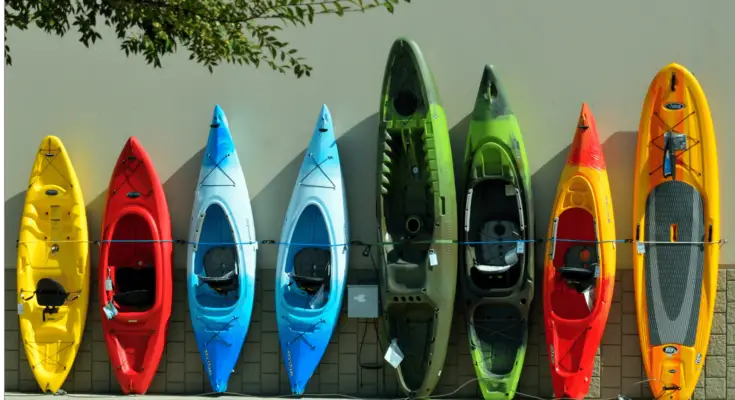
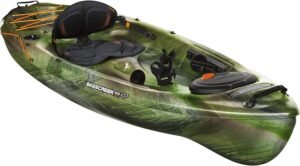

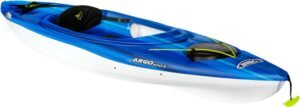
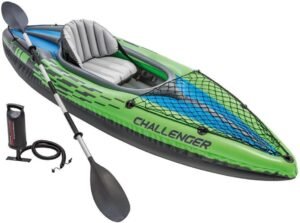

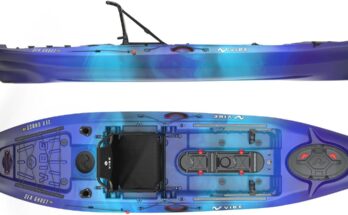

Hey there You have done a fantastic job I will certainly digg it and personally recommend to my friends Im confident theyll be benefited from this site